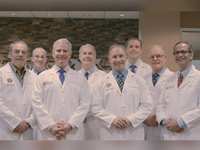Essential Guide To Understanding ALS in Seniors

ALS – a term that might not be familiar to everyone but carries significant weight for those who’ve encountered its effects firsthand. Dealing with this health issue goes beyond the medical textbooks; it’s a tough path that many older adults and their loved ones walk together. With “Understanding ALS in Seniors,” we dive into what this disease entails, stripping away the complexities to offer clear-cut insights. Let’s dive into understanding amyotrophic lateral sclerosis (ALS), focusing particularly on how it impacts our cherished elderly family members.
The stats speak volumes – with an ROI of empathy and care far surpassing any number you’ll find reported elsewhere. Dealing with ALS is about more than just crunching numbers; it’s truly understanding how deeply it affects someone’s everyday life. Understanding ALS in Seniors requires a holistic approach that encompasses physical, emotional, and social support.
WHAT IS AMYOTROPHIC LATERAL SCLEROSIS (ALS)?
ALS is a devastating disease that affects the nerve cells responsible for controlling voluntary muscle movement. It’s a progressive neurodegenerative disorder that slowly robs people of their ability to walk, talk, eat, and even breathe. ALS is also known as Lou Gehrig’s disease, named after the famous baseball player who was diagnosed with it in 1939. Gehrig was a star first baseman for the New York Yankees, but he was forced to retire at the age of 36 due to the progression of ALS. His farewell speech at Yankee Stadium, where he declared himself “the luckiest man on the face of the earth,” remains one of the most iconic moments in sports history.
HOW DOES ALS AFFECT THE BODY?
ALS affects the motor neurons, which are the nerve cells that control voluntary muscle movement. As these neurons degenerate and die, the brain loses its ability to initiate and control muscle movement. This leads to muscle weakness, atrophy, and eventually paralysis. The disease typically starts with muscle twitching, weakness in a limb, or slurred speech. As it progresses, it affects the person’s ability to control the muscles needed to move, speak, eat, and breathe. In the later stages, individuals may become totally paralyzed.
TYPES OF MOTOR NEURON DISEASES
ALS is part of a group of disorders known as motor neuron diseases. These diseases are characterized by the gradual degeneration and death of motor neurons. Some other types of motor neuron diseases include:
- Progressive bulbar palsy.
- Primary lateral sclerosis.
- Progressive muscular atrophy.
- Spinal muscular atrophy.
While these diseases share some similarities with ALS, they have distinct characteristics and progressions.
SPORADIC VS. FAMILIAL ALS
There are two main types of ALS: sporadic and familial. Sporadic ALS accounts for 90-95% of all cases, meaning these cases occur without any family history of the disease. Researchers are still trying to understand what causes sporadic ALS. Familial ALS, on the other hand, accounts for 5-10% of cases. In these cases, there is a family history of the disease, and it is caused by an inherited genetic mutation. Researchers have discovered several genes that are linked to familial ALS, including SOD1, C9ORF72, TARDBP, and FUS.
SYMPTOMS AND RISK FACTORS OF ALS IN SENIORS
As we age, our risk of developing ALS increases. In fact, the average age of onset for ALS is 55 years old. But what are the early signs and symptoms of ALS in older adults? And what risk factors should seniors be aware of?
EARLY SIGNS OF ALS IN OLDER ADULTS
The early symptoms of ALS can be subtle and may be overlooked or misdiagnosed at first. Some common early signs include:
- Muscle weakness or stiffness.
- Muscle cramps or twitches.
- Slurred speech or trouble swallowing.
- Difficulty walking or doing normal daily activities.
These symptoms usually start in one area of the body, such as the hands, feet, or mouth. They then spread to other parts of the body as the disease progresses.
LATE-STAGE SYMPTOMS OF ALS
As ALS progresses, the symptoms become more severe and debilitating. Late-stage symptoms may include:
- Complete paralysis.
- Difficulty breathing and swallowing.
- Increased risk of pneumonia and other infections.
- Cognitive and behavioral changes.
In the final stages of ALS, individuals often require 24-hour care and may need a feeding tube and ventilator to assist with eating and breathing.
WEAKNESS IN EXTREMITIES
One of the hallmark symptoms of ALS is muscle weakness, particularly in the arms and legs. This weakness may start as a subtle loss of strength or dexterity, but it gradually worsens over time. Simple tasks like buttoning a shirt, writing, or walking may become difficult or impossible. The weakness is caused by the degeneration of motor neurons in the brain and spinal cord. As these neurons die, they can no longer send signals to the muscles, leading to atrophy and weakness.
BREATHING DIFFICULTIES
As ALS progresses, it can affect the muscles involved in breathing. This can lead to shortness of breath, fatigue, and even respiratory failure. In fact, respiratory failure is the most common cause of death in people with ALS. Early signs of respiratory involvement may include:
- Shortness of breath during physical activity.
- Difficulty breathing while lying down.
- Morning headaches.
- Fatigue and daytime sleepiness.
As the disease progresses, individuals may require assistance with breathing, such as non-invasive ventilation or a tracheostomy.
DIAGNOSING ALS IN THE ELDERLY POPULATION
Diagnosing ALS can be challenging, particularly in the early stages of the disease. There is no single test that can definitively diagnose ALS, so doctors rely on a combination of tests and clinical observations to make a diagnosis.
MEDICAL SCREENING FOR ALS
If a doctor suspects ALS, they will typically start with a thorough medical history and physical examination. They may ask about family history, environmental exposures, and any other symptoms or health concerns. Next, they may order a series of tests to rule out other conditions and gather more information. These tests may include:
- Electromyography (EMG) to measure the electrical activity of muscles.
- Nerve conduction studies to assess the function of nerves.
- MRI or CT scans to look for abnormalities in the brain and spinal cord.
- Blood and urine tests to check for other conditions.
Based on the results of these tests and the individual’s symptoms, the doctor may make a diagnosis of ALS. Early diagnosis of ALS is crucial for several reasons. First, it allows individuals to start treatment as soon as possible. While there is no cure for ALS, there are medications and therapies that can help manage symptoms and improve quality of life. Second, early diagnosis gives individuals and their families time to plan for the future. This may include making decisions about care, finances, and end-of-life wishes. Finally, early diagnosis is important for research purposes. The more we understand about the early stages of ALS, the better equipped we will be to develop new treatments and therapies.
PROGRESSION RATE IN SENIORS
The progression of ALS can vary widely from person to person. Some individuals may experience a rapid decline, while others may have a slower progression over several years. In general, older adults with ALS tend to have a slower progression than younger individuals. However, this is not always the case, and some seniors may experience a rapid decline. Factors that may influence the progression of ALS in seniors include:
- Age at diagnosis.
- Site of onset (bulbar vs. limb).
- Presence of cognitive or behavioral changes.
- Nutritional status.
- Respiratory function.
Monitoring the progression of ALS is important for making decisions about care and treatment. Doctors may use tools like the ALS Functional Rating Scale (ALSFRS-R) to assess an individual’s functional abilities over time. Alongside medical interventions, ensuring access to healthy and comforting meals can contribute significantly to overall well-being and quality of life for individuals living with ALS.
TREATMENT OPTIONS AND MANAGEMENT STRATEGIES FOR ALS
While there’s no cure for ALS, treatment options can help manage symptoms and improve quality of life. Medications like riluzole and edaravone may slow the progression of ALS. But they’re not a magic bullet. Physical therapy can help maintain muscle strength and function. Stretching and range-of-motion exercises are key. Occupational therapists teach ways to stay independent longer. Adaptive equipment like ramps, braces, and walkers come in handy.
SPEECH THERAPY AND VOICE BANKING
As ALS affects speech, a speech therapist can help you communicate better. Techniques like speaking slowly and clearly go a long way. Voice banking is recording your natural voice for future use in a speech-generating device. It’s like an insurance policy for your voice. Maintaining a healthy weight is crucial with ALS. As chewing and swallowing become difficult, nutritional shakes and smoothies can help. In later stages, a feeding tube may be necessary to prevent malnutrition and weight loss. It’s not fun, but it keeps you nourished.
BREATHING SUPPORT
Respiratory weakness is a big challenge with ALS. Non-invasive ventilation with a BiPAP machine can help you breathe easier, especially at night. In advanced stages, a tracheostomy and ventilator may be needed for full-time breathing support. It’s a big decision, but it can extend life.
SUPPORTING ELDERLY LOVED ONES WITH ALS
An ALS diagnosis affects the whole family. Suddenly, roles and dynamics shift. It’s a lot to process. Spouses often become primary caregivers. Adult children step up to help. Everyone pitches in where they can. But the physical and emotional toll can be heavy. Caregiver burnout is real. Make sure to care for the caregivers, too.
BUILDING A STRONG SUPPORT SYSTEM
No one should face ALS alone. Rally friends and family to form a support network. Delegate tasks and responsibilities. Connect with local ALS chapters and support groups. They provide resources, advice, and a listening ear from those who get it.
PROVIDING EMOTIONAL AND PRACTICAL ASSISTANCE
People with ALS need more than physical help. They need emotional support to cope with this devastating disease. Listen to their fears and frustrations. Encourage them to express their feelings. Reassure them that their life still has value and meaning. Help with practical matters like insurance, finances, and advance directives. Assist with daily tasks and hobbies they enjoy. Show them they’re not alone.
ADVANCES IN ALS RESEARCH AND CLINICAL TRIALS
The fight against ALS continues. Researchers work tirelessly to unravel the mysteries of this complex disease. Genetic studies have identified numerous genes linked to ALS. Understanding how mutations in these genes cause motor neuron death could lead to new therapies. Stem cell and gene therapies show promise in slowing or even reversing ALS. But much more research is needed to prove their safety and effectiveness.
PARTICIPATING IN CLINICAL STUDIES
Clinical trials are essential for developing new ALS treatments. But finding enough participants can be challenging, especially among the elderly. If you or a loved one has ALS, consider participating in a clinical trial. It’s a way to access potential treatments and help advance ALS research. Talk to your doctor about clinical trials you may qualify for. Organizations like the ALS Association and the National Institutes of Health also have online databases of ongoing studies.
CONCLUSION ON UNDERSTANDING ALS IN SENIORS
So here we are at the end of our exploration into understanding ALS in seniors—a path marked by both challenges and moments of resilience. What have we learned? That beyond every statistic lies a story waiting to be told—a narrative rich with courage, love, and unyielding spirit.
This isn’t just about grasping the technicalities or memorizing facts related to amyotrophic lateral sclerosis (ALS). It’s also about recognizing humanity’s incredible capacity for compassion amidst adversity. As these pages unfolded before us like chapters from an unwritten book, they reminded us why knowledge is indeed powerful—because when wielded with heart, it transforms lives. Understanding the challenges faced by those with ALS extends to providing compassionate care, including options like assisted living in the Woodlands, TX, where individuals can receive the support they need while maintaining dignity and quality of life.

















